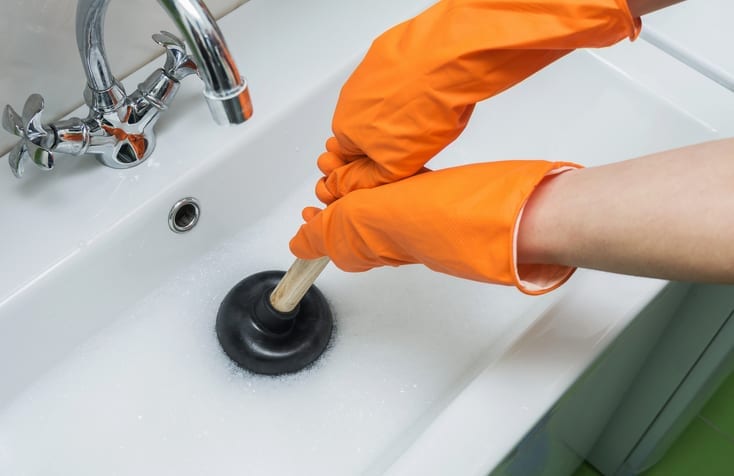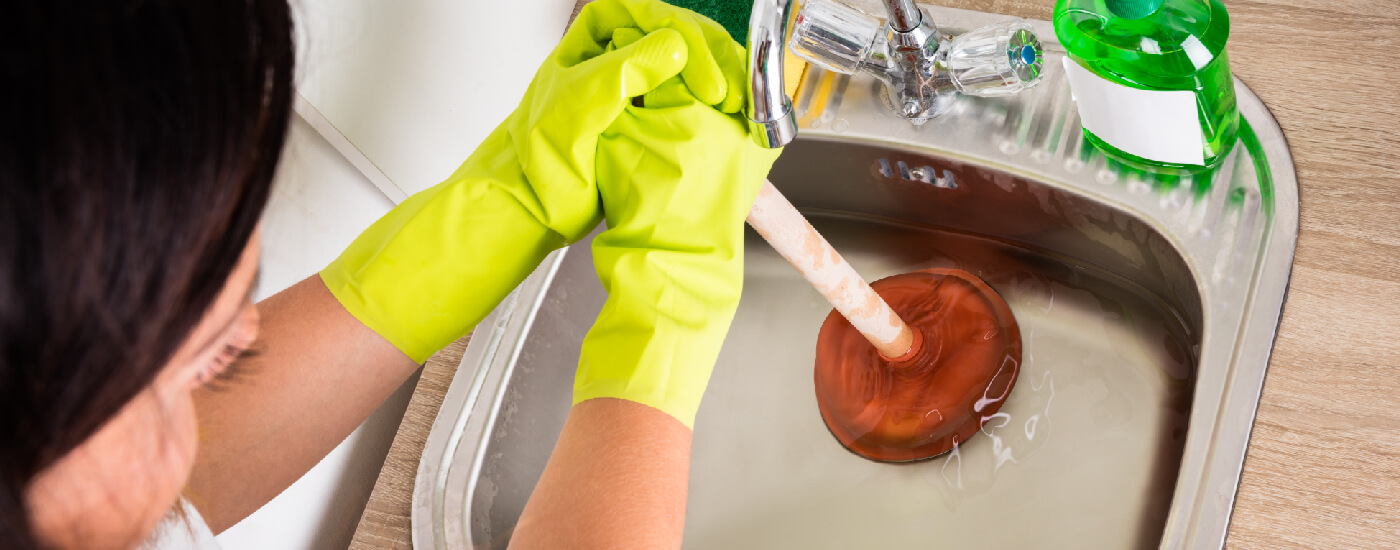How to Effectively Use Plungers and Drain Cleaner: Pro Guidance
Schedule Appointment NowThe content following next in relation to How to Use a Plunger to Unclog a Toilet or Drain is especially motivating. Try it and draw your own conclusions.

Introduction
Appropriate upkeep of home drains is crucial for avoiding obstructions and ensuring smooth water flow. Among the trick tools in every property owner's toolkit is the bettor, along with various drain cleaners developed to tackle stubborn blockages successfully. This write-up explores exactly how to utilize plungers and drain cleaners successfully to maintain your drains streaming freely.
Area 1: Comprehending Plungers
Types of Plungers
There are several sorts of bettors readily available, each developed for different kinds of drains and obstructs. One of the most usual types include mug plungers, flange plungers, and accordion plungers.
How Plungers Job
Plungers deal with the concept of developing pressure and suction to dislodge blockages. When correctly applied over a drain, they develop a vacuum that can take out particles or separate clogs.
Choosing the Right Plunger
Picking the appropriate plunger depends upon the type of drain and the nature of the clog. Mug plungers are optimal for sinks and bathtubs, while flange plungers are much better fit for toilets because of their layout.
Common Blunders with Plungers
Preventing these blunders makes sure reliable plunging: inappropriate seal around the drainpipe, not enough force, and not clearing surrounding particles.
Area 2: Using Plungers Efficiently
Prep work
Before plunging, make sure the bettor covers the drain completely and forms a tight seal. Clear any type of visible particles around the drain opening.
Strategy
Beginning with mild diving motions to build suction. Boost stress slowly, using a constant rhythm. Repeat as necessary until the drainpipe removes.
Troubleshooting Tips
If diving doesn't function, attempt changing the seal, applying petroleum jelly for a far better seal, or using a various sort of plunger.
Section 3: Recognizing Drain Cleansers
Types of Drainpipe Cleaning Company
Drain pipes cleaners can be chemical or chemical. Chemical cleansers utilize strong chemicals to dissolve obstructions, while enzymatic cleansers make use of all-natural enzymes to break down raw material.
Exactly How Drainpipe Cleansers Work
Chemical cleaners react with obstructions to liquify them, while chemical cleaners break down natural products like hair and oil without harming pipelines.
Safety and security Factors to consider
Constantly use gloves and eye security when utilizing chemical drain cleansers. Make certain appropriate ventilation and comply with maker directions very carefully.
Eco-Friendly Alternatives
Think about utilizing vinegar and baking soft drink or enzyme-based cleansers for environment-friendly alternatives that are safer for pipes and the atmosphere.
Area 4: Making Use Of Drain Cleaners Successfully
Application Techniques
Put chemical cleaners directly right into the drainpipe opening. Allow them to work for the advised time before purging with hot water. Enzymatic cleansers need to sit over night.
Preventative measures
Prevent mixing various kinds of cleaners, as this can create poisonous fumes. Never ever use chemical cleaners together with a plunger, as splashing can take place.
Managing Stubborn Blockages
For relentless obstructions, take into consideration using a plumbing serpent or calling a professional plumber to avoid damages to pipelines.
Final thought
To conclude, comprehending just how to utilize plungers and drain cleaners successfully is vital for keeping healthy pipes systems. By selecting the right tools and techniques, homeowners can tackle small clogs and avoid significant pipes issues down the line.
How to Use a Plunger to Unclog a Drain
The humble plunger is a simple yet effective tool for breaking clogs in sinks, tubs and toilets. This handy tool is easy to use. You can make the most of its power if you understand how it works. Ready to dive in? Here’s what you need to know.
Safety First!
Never use a plunger with drain chemicals. Water will splash as you work, and the chemicals can spatter, burning skin and eyes. It’s a good idea to use rubber gloves and wear safety goggles when you work on a clog.
Choose the Right Tool for the Job
Plungers come in two different styles. Sinks, bathtubs and showers require a cup plunger. Like its name suggests, the rubber end is shaped like a cup. Use a flange plunger on toilets. These plungers have a rubber funnel extending from the cup. A plunger needs to be big enough to cover the drain.
Ready, Set, Plunge!
Coat the rim: Coat the plunger rim with petroleum jelly. This helps make a better seal.
Block outlets: Hold a wet rag over nearby outlets such as the overflow vent or the drain in a second sink.
Release air: Insert the plunger at an angle into the water. Water will displace air in the cup. A water-filled cup is more forceful than one filled with air.
Keep the plunger upright: Hold the plunger perpendicular to the drain. Use fast, forceful strokes, but make the first stroke gentle. The first stroke can create a splash if the cup still contains air. Thrust the plunger 15 to 20 times.
Snap off the plunger: The final stroke should be a strong upward motion that ends when the plunger snaps off the drain.
Repeat the process: you may need to repeat this sequence several times. When the water drains away, your work is done. High-five! https://plumbernw.com/blog/how-to-use-a-plunger-to-unclog-a-drain/

Application Techniques
Put chemical cleaners directly right into the drainpipe opening. Allow them to work for the advised time before purging with hot water. Enzymatic cleansers need to sit over night.
Preventative measures
Prevent mixing various kinds of cleaners, as this can create poisonous fumes. Never ever use chemical cleaners together with a plunger, as splashing can take place.
Managing Stubborn Blockages
For relentless obstructions, take into consideration using a plumbing serpent or calling a professional plumber to avoid damages to pipelines.
Final thought
To conclude, comprehending just how to utilize plungers and drain cleaners successfully is vital for keeping healthy pipes systems. By selecting the right tools and techniques, homeowners can tackle small clogs and avoid significant pipes issues down the line.
How to Use a Plunger to Unclog a Drain
The humble plunger is a simple yet effective tool for breaking clogs in sinks, tubs and toilets. This handy tool is easy to use. You can make the most of its power if you understand how it works. Ready to dive in? Here’s what you need to know.
Safety First!
Never use a plunger with drain chemicals. Water will splash as you work, and the chemicals can spatter, burning skin and eyes. It’s a good idea to use rubber gloves and wear safety goggles when you work on a clog.
Choose the Right Tool for the Job
Plungers come in two different styles. Sinks, bathtubs and showers require a cup plunger. Like its name suggests, the rubber end is shaped like a cup. Use a flange plunger on toilets. These plungers have a rubber funnel extending from the cup. A plunger needs to be big enough to cover the drain.
Ready, Set, Plunge!
Coat the rim: Coat the plunger rim with petroleum jelly. This helps make a better seal. Block outlets: Hold a wet rag over nearby outlets such as the overflow vent or the drain in a second sink. Release air: Insert the plunger at an angle into the water. Water will displace air in the cup. A water-filled cup is more forceful than one filled with air. Keep the plunger upright: Hold the plunger perpendicular to the drain. Use fast, forceful strokes, but make the first stroke gentle. The first stroke can create a splash if the cup still contains air. Thrust the plunger 15 to 20 times. Snap off the plunger: The final stroke should be a strong upward motion that ends when the plunger snaps off the drain. Repeat the process: you may need to repeat this sequence several times. When the water drains away, your work is done. High-five! https://plumbernw.com/blog/how-to-use-a-plunger-to-unclog-a-drain/

As an enthusiastic reader about How to Use a Plunger to Unclog a Toilet or Drain, I imagined sharing that excerpt was worthwhile. If you appreciated our post if you please consider to pass it around. I recognize the value of your readership.
Click Here